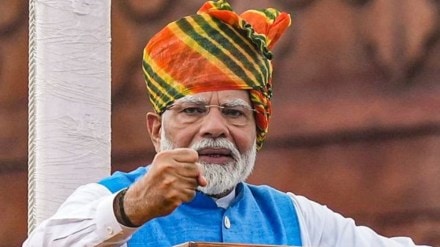Of all statements and exhortations by Prime Minister Narendra Modi while addressing the nation on the 78th Independence Day, the one with the most transformative potential for the country was his call for “national resources (to be) used for the common man”. His 98-minute speech cannot be blamed for being shorn of visionary articulation. It also sought to demonstrate that in spite of the ruling alliance having to rely for majority on a couple of allies that don’t necessarily subscribe to the Bharatiya Janata Party’s ideological moorings, his third term would still sedulously aim at fulfilling the doctrinal (Hindutva) goals. The prime minister not only renewed the pitch for “one-nation-one-election”, but also stressed the need for a “secular civil code”, while calling the current set of civil laws admittedly “communal”. Since both these objectives are politically contentious, securing the requisite legislative support for them would be hard; the prime minister’s assertions in these respects, therefore, may only have the function of political messaging, and grandstanding for now.
For anything, these can’t rationally be the immediate priorities for the country, which has lately been warned by World Bank researchers about being caught in a “middle-income trap”, along with many of its peers, whose mean per capita income remained below a tenth of the US for the last half a century. To be sure, Modi dreams of making India a global manufacturing hub (a prophecy he had made it the past too, and so had his two immediate two predecessors), a “skill capital of the world”, a “global education hub by promoting higher learning and research”, a “global leader” in semiconductor and green hydrogen production, and so forth. Some of these aspirations are far removed from not just the current realities, but the potential changes the relevant (non-substantive) policies being set out could bring about.
To cite one instance, while research and innovation are potent tools for India to correct the gross distortions in capital allocation it is suffering from, the country’s R&D spend actually declined as a share of GDP over the last two decades to less than 0.7%. Worse, expenditure on education languishes at 3% of GDP, while the prescription has been to raise it to at least 6%. Modi’s I-Day speech would have inspired more confidence if it included definitive action plans on these and multiple other pressing imperatives, including decentralised governance, and strengthening of institutions. Many would have expected the prime minister to state where the country stands now, in terms of some of his past pronouncements, like “doubling of farmers’ (current) income”.
The official line is India has nearly eliminated “extreme poverty”, and that 248 million people moved out of “multidimensional poverty” in nine years to 2022-23 (an earlier UN report said 415 million Indian people exited such poverty in 15 years to 2019-21). These have been contested by many experts for lack of concrete data, and anecdotal evidence to the contrary. The prime minister should have initiated a credible estimation of India’s poverty incidence, via house-to-house enumeration, and based on realistic “real income-based” yardstick. Whether the PM’s vision of Viksit Bharat (developed India) by 2047 could be achieved or not in technical terms (economists would say this is a tall order), the country would indeed need to urgently act on multiple fronts to raise economic productivity to higher levels. Policies must catalyse more efficient resource allocation among economic agents and development of human capital, as the much-touted demographic dividend needs to be amplified and harnessed before its fizzles out.
The Modi regime saw a cleansing of the banking system, proliferation of women self-help groups that helped weaken patriarchy, and emergence of a critical mass of global capability centres in its geography working for big global firms. Even to build on these gains, and boosting domestic demand, evening out the resources is vital. Unlike China during the last four decades of its rapid economic ascendancy, India can’t expect much help from the external world for its planned strides, given the state of the world economy, and the geopolitical incertitude.
